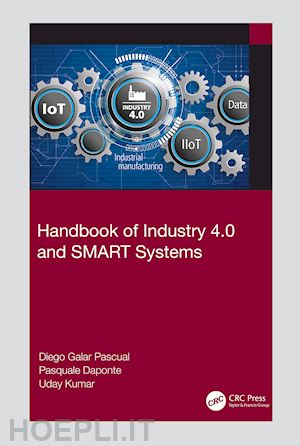Dr. Diego Galar is Professor of Condition Monitoring in the Division of Operation and Maintenance Engineering at LTU, Luleå University of Technology where he is coordinating several H2020 projects related to different aspects of cyber physical systems, Industry 4.0, IoT or industrial Big Data. He was also involved in the SKF UTC centre located in Lulea focused on SMART bearings and also actively involved in national projects with the Swedish industry or funded by Swedish national agencies like Vinnova. He has been involved in the raw materials business of Scandinavia, especially with mining and oil&gas for Sweden and Norway respectively. Indeed, LKAB, Boliden or STATOIL have been partners or funders of projects in the CBM field for specific equipment like loaders, dumpers, rotating equipment, linear assets etc… He is also principal researcher in Tecnalia (Spain), heading the Maintenance and Reliability research group within the Division of Industry and Transport. He has authored more than five hundred journal and conference papers, books and technical reports in the field of maintenance, working also as member of editorial boards, scientific committees and chairing international journals and conferences and actively participating in national and international committees for standardization and R&D in the topics of reliability and maintenance. In the international arena, he has been visiting Professor in the Polytechnic of Braganza (Portugal), University of Valencia and NIU (USA) and the Universidad Pontificia Católica de Chile. Currently, he is visiting professor in University of Sunderland (UK), University of Maryland (USA), University of Stavanger (NOR) and Chongqing University in China. PASQUALE DAPONTE was born in Minori (SA), Italy, on March 7, 1957. He obtained his bachelor's degree and master's degree "cum laude" in Electrical Engineering in 1981 from University of Naples, Italy. He is a Full Professor of Electronic Measurements at University of Sannio - Benevento. From 2016 he is Chair of the Italian Association on Electrical and Electronic Measurements. He is Past President of IMEKO. He is member of: I2MTC Board, Working Group of the IEEE Instrumentation and Measurement Technical Committee N°10 Subcommittee of the Waveform Measurements and Analysis Committee, IMEKO Technical Committee TC-4 "Measurements of Electrical Quantities", Editorial Board of Measurement Journal, Acta IMEKO and of Sensors. He is Associate Editor of IET Science Measurement & Technology Journal. He has organised some national or international meetings in the field of Electronic Measurements and European co-operation and he was General Chairman of the IEEE Instrumentation and Measurement Technical Conference for 2006, Technical Programme Co-Chair for I2MTC 2015. He was a co-founder of the IEEE Symposium on Measurement for Medical Applications MeMeA, now, he is the Chair of the MeMeA Steering Committee, memea2018.ieee-ims.org He is the co-founder of the; - IEEE Workshop on Metrology for AeroSpace, www.metroaerospace.org - IEEE Workshop on Metrology for Archaeology and Cultural Heritage, www.metroarcheo.com - IMEKO Workshop on Metrology for Geotechnics, www.metrogeotechnics.org. - IEEE Workshop on Metrology for the Sea, www.metrosea.org - IEEE Workshop on Metrology for Industry 4.0 and IoT, www.metroind40iot.org He is involved in some European projects. He has published more than 300 scientific papers in journals and at national and international conferences on the following subjects: Measurements and Drones, ADC and DAC Modelling and Testing, Digital Signal Processing, Distributed Measurement Systems. He received; - in 1987 from the Italian Society of Oftalmology the award for the researches on the digital signal processing of the ultrasounds in echo-oftalmology, - in 2009 the IEEE Fellowship, - in 2009 the Laurea Honoris Causa in Electrical Engineering from Technical University "Gheorghe Asachi" of Iasi (Romania), - the "The Ludwik Finkelstein Medal 2014" from the Institute of Measurement and Control of United Kingdom, - in May 2018 the "Career Excellence Award" from the IEEE Instrumentation and Measurement Society "For a lifelong career and outsanding leadership in research and education on instrumentation and measurement, and a passionate and continuous service, international in scope, to the profession.", - in September 2018 IMEKO Distinguished Service Award. Dr UdayKumar is the Chair Professor of Operation and Maintenance Engineering, Director of Research and Innovation (Sustainable Transport) at Luleå University of Technology and Director of Luleå Railway Research Center. His teaching, research & consulting interests are equipment maintenance, reliability and maintainability analysis, product support, Life Cycle Costing(LCC) , Risk analysis, system analysis, eMaintenance, asset management etc. He is visiting faculty at the Center of Intelligent Maintenance System(IMS)- a centre sponsored by National Scie











